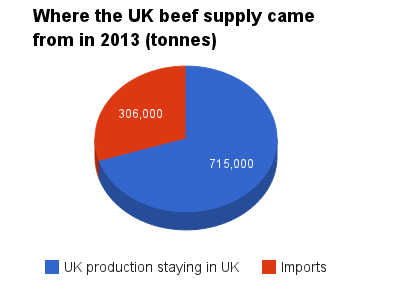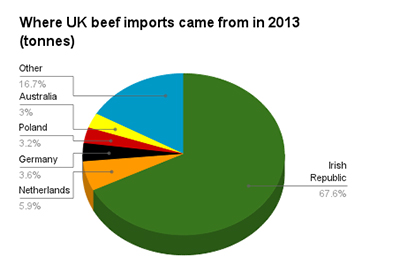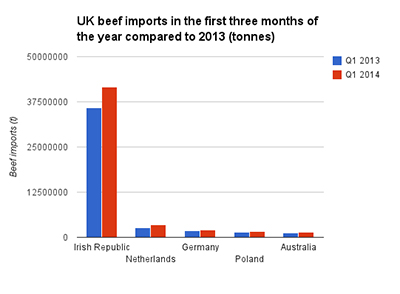To work out if Polish beef is really a problem for the UK, and how big an issue imports are more widely, we need to look at where the beef on our supermarket shelves comes from.

How much is imported?
In 2013, the UK raised and slaughtered 842,000t of beef.
About one-seventh of that was exported and 306,000t was imported, taking the total UK supply to just over 1m tonnes.
That means about 70% of the beef used in the UK last year was home-produced.
Where does the imported beef come from?
Last week Polish beef was blamed for driving down UK farmgate prices. But beef from Ireland remain by far the main import.
Ireland accounts for more than two-thirds of all the beef shipped into the UK, so any short-term increases from across the Irish sea have a big effect on how much farmers are paid.
By contrast, Poland is actually our fourth biggest supplier, at just 3.2% of imports in 2013.
The UK bought more from Germany and the Netherlands in the same year.

Has foreign beef poured in this year?
Farmgate prices have fallen consistently since the start of 2014 and a dramatic rise in imports has been blamed.
A comparison of trade figures from the first quarter of this year and the last shows imports have clearly been on the up. Most importantly, shipments from Ireland were 16% higher.
Netherlands (29%), Germany (6%), Poland (6%) and Australia (11%) also saw rises – but their increases are tiny compared to the effect Ireland can have.

Will these rising imports last? Eblex is still forecasting a fundamentally tight supply across Europe. So this could be a short-term phenomenon.





